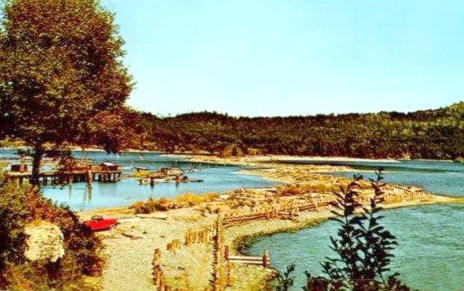Elida Peers | Contributed
Today you’d seldom see Whiffin Spit so bare of walkers and parked vehicles, but in the 1950s the Spit was more of an industrial site rather than a recreational area. Changing times have made it into one of our most popular walks.
The log dump and booming area you see at the left in the photo was used by a number of logging outfits; in 1948 Rex Kendrew moved his small portable sawmill to this spot. He and his brother Frank bought logs from Sullivan and Lowe, and from Albert Gibson, and also bought beach-combed logs.
Their cut included Douglas-fir, cedar, balsam and hemlock, producing lumber for house construction in Sooke and Victoria, and also railway ties, sold to Great Britain.
RELATED: Whiffin Spit named after Royal Navy clerk
While the Kendrews moved their mill soon after, other outfits which dumped at that site included Pete Pedneault, George Pimlott, and Coal Creek Logging.
Rod Sullivan recalls that after the fishtraps closed in 1958 he worked at this booming and log sort grounds for four years for Vic Hoybe. Sullivan says when Elders sold to Moore Whittington, they hauled their logs to this dump instead of to Muir Creek.
In this view, you see pilings driven into the Spit in an effort to slow erosion from the winter storms. About half way out, in the wider section, Sooke Harbour Fishing and Packing Company, operators of the fishtraps, used to store their tall pilings over the winter season, placing them in tiers, crisscross, so the air would circulate through the piles. In the spring they would retrieve the pilings, tow them out to a trap site and a pile driver would reinstall them into the ocean floor.
Very little development shows in East Sooke. This photo appears to have been taken from Sooke Harbour House; which at that time was owned by Jules and Marie LaVertu, and which then consisted of four upstairs suites and a popular dining room. The LaVertus raised their family of eight there; in the midst of the busy household Madame LaVertu also taught piano.
In 1979 Sooke Harbour House was bought by Sinclair and Frederique Philip, who instituted a cuisine that made them internationally famous and eventually enlarged the resort to the 28 rooms.
Many years after this scene, the Spit was seriously breached, and a major repair was undertaken by regional director Bob Clark, with the assistance of logging operator Eric Butler.
•••
Elida Peers is the historian of the Sooke Region Museum.
editor@sookenewsmirror.com
Like us on Facebook and follow us on Twitter
